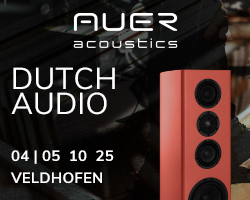Paul Hynes(PH) is a long established designer and builder of bespoke power supplies. He is located just off the  Scottish Coast on a cold and misty island and with his business partner David Webb in Watton produces a range of power supplies which can be used with many hifi products including analogue, digital and amplification.
Scottish Coast on a cold and misty island and with his business partner David Webb in Watton produces a range of power supplies which can be used with many hifi products including analogue, digital and amplification.
Recently, due to popular demand, the business has expanded with David taking over the commercial side and his team of experienced engineers building Paul’s designs, leaving him able to concentrate on further R&D with more products finding their way into his range in the not too distant future I’m told.
I initially contacted Paul regarding a power supply for my Squeezebox Touch (SBT) rather than about a review product as I had been recommended his power supplies by many users and wanted to give one a try – I thought it would be a good comparison against my Teddy Pardo PSU which has lived in my system for sometime now and I’ve been very happy with.
Discussing my requirements and the standard I was used to he recommended it may be worth trying the SR3 power supply (£300), ‘it comes in various forms’ Paul said ‘and can be configured to your devices specific power requirements’ – Sounds good tome. The SR3 was the first product to be handed over to David Webb and his team (which I think Paul was thankful of due to a backlog of orders) so I contacted David to make arrangements to purchase one to try.
The Actual Supply
The supply can be bought with a plaited DC cable made from solid core copper (£50) or solid core fine silver (£85) and there’s also an option to compliment the silver output cable with matching lines from the regulator to DC socket internally (£10)
My current Teddy Pardo(TP) PSU has an external silver DC cable and internal silver Deltec cabling which was a mod I had done after purchase and I thought offered up further improvements over the standard unit, but I opted to have the all copper Paul Hynes solution and run with that for a while and to ultimately upgrade to the fine silver cabling thereafter if I thought it would offer an upgrade in sound quality.
Burning In
A couple days after purchase my supply arrived. A very smart aluminium case with a black aluminium faceplate sporting the companies branding, the underside has the serial number. The DC cable is made up of three copper conductors in individual teflon tubes braided by hand.
I swapped out the TP supply for the PH unit and fired up the system for a quick listen. First impressions were one of added weight mainly but it was clear to hear the supply needed some good burn in time as it wasn’t sounding anywhere near as open and detailed as the TP did, which was to be expected.
Over a period of about three weeks the sound really did gain snap, sparkle and openness and vocals were allowed to breathe considerably more. I would say in the later parts of the fourth week that the supply seemed to hit a more stable ground and I was convinced that any further burning in would only add a few more percent in performance.
The Sound
The SR3 gives very good weight to the sound, a rich and tempered feel to the music. It’s extremely natural in its reproduction and has dynamics to suit. Playing my favoured array of female and male vocalists along with some acoustic music I found transients were well defined whilst vocals were strong, focused, sat in the soundstage just to my likening and never had any hint of forwardness. In all, I found there was simply a display of natural ease and flow to the sound which was great.
The Teddy Pardo PSU which I was A/Bing back and forwards into the system has a more dynamic and energetic shift to the presentation and although very entertaining I felt that it made for a more exhaustive and a little more of a manufactured sound in comparison.
The TP PSU did however have better sparkle and air in the top end and I enjoyed the pronounced clarity of reverbs more, inner detail and the emphasis it gave on harmonics, which with both power supplies I felt filled the room equally, expressing the qualities of the modified SBT which was producing a fantastically solid and spacious soundstage but the TP just had the edge when it came to the clarity of those smaller details and nuances.
Impressed with the nature of the Paul Hynes PSU with its very natural flow, I tossed up the idea of the silver cabling for a day or so, wondering if it would take the edge off the presentation that I enjoyed and replace it with a more cutting edge and sparklier dynamic sound like the TP.
I had a chat again with David and Paul and they graciously agreed to doing the silver upgrade for me and if I didn’t like it I could have it returned to the previous copper and so of course I agreed.
The following day the supply was collected and two days later it was returned! Which allowed me to have some good critical listening with the TP and create a playlist of songs I could use to compare certain aspects of the sound, bearing in mind there was now even more burning in to do.
Reinserting the Paul Hynes supply into my system and switching back on showed immediate differences in tone and timbre. Sparkle and airiness were more apparent and vocals took on a gorgeous silky tone with improved clarity and so far the weight and natural dynamics which I’d enjoyed was still there.
After about another three weeks the playlist that I really wanted to use to compare and contrast the two supplies with finally came into play. I chose a mixture of music as I would for any session of this kind, female vocals to test sheen on upper mids, good solid male vocals to hear how fleshed out the lower mids were and a mixture of instrumental and manufactured music such as dance and electronica for nuances, dynamics top end and bass response.
The Paul Hynes power supply was a dream that left the Teddy Pardo behind, not by a huge margins at all, but enough to conclude that the silver upgrade was the correct decision.
Cymbals absolutely shimmered and on busier symphonies there was a great spatial awareness and darker background that I didn’t feel the Teddy Pardo managed quite as well, concerning itself more with impact on dynamic flurries and allowing a little more grain to enter the soundstage, whereas the SR3 retained that natural feel but added extra clarity to those smaller details allowing them to be a little more prominent on and around the boundaries of the soundstage.
The Teddy Pardo had a wonderful 3D image, or at least contributed to the SBT’s characteristic of one, but the Paul Hynes arranged the layering with more definition which added character to a performance. I often talk about ‘sculpture’ referring this to the likes of layering and 3D imaging which was cleaner and less misty now.
Vocal work was better than the copper wired version, a cleaner more frisky tone to the female vocal, slightly better pronunciation and no sheen or brightness in upper registers. The natural, weightier presentation of the SR3 was key to me enjoying the more fleshed out raspy tones of male vocals, which was preferable over the Teddy Pardo’s cleaner midrange as a whole.
With regards to top end breath and air, sparkle and shine there really wasn’t much difference between the two  supplies, but the integration down into the midrange on the Paul Hynes with its slightly warmer side of neutral balance added to a more pleasing presentation to these ears.
supplies, but the integration down into the midrange on the Paul Hynes with its slightly warmer side of neutral balance added to a more pleasing presentation to these ears.
Bass notes were detailed, responsive and extended and with manufactured music showed off the powerful and dominant side and I really can’t fault the Teddy Pardo in this area and especially with this type of music as it is one of its true strengths knocking out kick drums and dynamics with absolute ease.
Since owning the Paul Hynes SR3 I have purchased another standard Squeezebox and can confirm the attributes mentioned in this review to be apparent and feel it an extremely worthwhile upgrade, especially in bass reproduction which develops a tighter and more informative response with greater extension and detail.
It’s also worth playing with different power cables I believe and I have had very worthwhile improvements in selecting a particular cable that favoured my tastes from a few I already owned.
Conclusion
Both supplies are extremely well made by professionals which are really at the top of their game. The Teddy Pardo is a clean sounding dynamic supply with incredible attributes. However, for me and to cover a wider range of genres, the Paul Hynes is a far better fit and does excel in certain areas, some in smaller degrees and some in amounts that convinced me it was a better all rounder. The Paul Hynes supply was able to produce a beautifully natural and silky presentation in the midrange coupled with added body and tone, without ever sounding exhausting dynamically. I also found it able to replicate an image convincingly clean and clearly without adding grain and remaining true to the tonal balance of a track and also having a strong solid engaging soundstage.
I would recommend the silver upgrade if it’s within budget when purchasing but it’s always something that can be done at a later date.
Highly recommended for its clarity, attention to detail and natural overall presentation.
Author – Danny Worth
How we carry out reviews.
Read more Hifi Review.






































































































































































































You must be logged in to leave a reply.